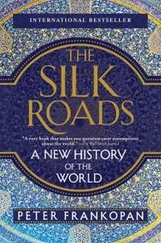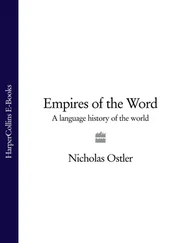Politically, the boot was on the other foot. The Sumerians themselves were dominated a little later (2334-2200) by their Akkadian-speaking neighbours to the north when King Sargon—or more accurately Šarrukîn , ‘the righteous king’—imposed himself. Although this Akkadian empire was overthrown after a few generations by invaders from Qutium in the north-east, and the Sumerians, spearheaded by the city of Ur, were able eighty years later to reclaim their independence, southern Mesopotamia was henceforth known to all under the joint name of ‘the land of Sumer and Akkad’. [11] The Greeks, on the scene too late to know any of these early origins, called the place Mesopotamia, ‘Mid-River-land’, emphasising the framing role of the rivers Euphrates and Tigris, Greek versions of the names Purattu and Idiqlat. But in this early period the Euphrates is much more central, flowing through Babylon and Ur, and watering the lands of both Akkad and Sumer. The Tigris, farther to the east, grows in importance with the rise of Assyria. ‘Assyria’ is the Greek attempt to name Asshur.
When at the end of the third millennium Ur, the greatest Sumerian city, fell to more Semitic speakers, this time nomadic Amorites from the north-west, a new pattern set in: for the next 1500 years the land was periodically unified under Akkadian-speaking dynasties ruling from Babylon in the south or Assyria in the north, only to have their power disrupted every few centuries by power struggles between them, or invasions from the west or east. The invasions, although they might last a long time, notably four hundred years after the Kassites took control of Babylon in 1570 BC, never had any great linguistic effect. Like the various Turks who would conquer north China, or the Germans who were to topple Roman control of western Europe, these were all invaders who acquiesced in their victims’ languages. From about 2000 BC, Akkadian had become the only language spoken throughout the region. But Sumerian was not forgotten. It moved upmarket, and kept its influence in the written language. Babylon and Assyria went on for a millennium and a half as the two powers within Mesopotamia, competing often with ruthless savagery, but speaking dialects of the same language.
While Akkadian held the central area until the middle of the first millennium BC, it was surrounded to the east, north and west by unrelated languages. Hurrian, replaced later by ‘Urartian’ (whose name lives on in Mount Ararat), was the major language of the north, spoken from modern Armenia as far south as Kirkuk in modern Iraq. (Its surviving relatives, tiny languages such as Avar and Lezgian in the East Caucasian family, are still spoken on the western shores of the Caspian.)
To the west of this, in the central plain of Anatolia, which is now Turkey, we see the first known Indo-Europeans, Hittites, with their close relatives who spoke Luwian and Palaic. [12] The name Hittite (from the Hebrew ẖittī ) comes from their power centre in the land of Hatti, where the natives spoke a quite unrelated language, Hattic. The Hittites in fact called their language Nesian ( nešili ), after their city of Nešaš (or Kanesh, modern Kültepe, in south-eastern Turkey) but the biblical misnomer ‘Hittite’ has stuck.
The Hittites, flourishing from the sixteenth to the thirteenth century BC, created a massively literate civilisation, and their royal library at Hattusas, discovered in modern Boğaz Köy, 150 kilometres west of Ankara, contains materials not only in Hittite and Akkadian, but also in Hurrian, Luwian and Palaic, interspersed here and there with phrases in Hattic, Sumerian and the Indo-Aryan language of the Mitannian aristocracy. The Hittites were often a threat to Sumer and Akkad, and it had been a swift Hittite invasion, not followed up, which had left Babylon open to the Kassite takeover already mentioned. In the event, the Hittite empire collapsed about the end of the thirteenth century, but related languages lived on for many centuries, particularly Luwian, and farther to the west Lydian. [13] Croesus, the proverbially rich last king of Lydia, fell to Cyrus the Persian in 547 BC. Linguistically, this was the ultimate death rattle of Hittite power.
South of the Hittites but due west of Sumer and Akkad, in modern Syria, the languages were Semitic, close relatives of Akkadian. We have seen that it was from this direction that the Amorite invasion came (named after the region Amurru , Akkadian for ‘the west’, in northern Syria), which had delivered the coup de gršce to Sumerian independence, and hence Sumerian as a spoken language, around 2000 BC.
There seems, in fact, to have been some fraternity among these cities of Semitic speech, from Ugarit (on the coast near Lataqieh) through Iamhad (Aleppo), Karkemish and Qatna in northern Syria to Mari on the Euphrates. Mari and Ugarit both left massive libraries from the second millennium BC. But as to foreign influence in this period, there was a tendency here to look south towards the power centre in Egypt, rather than to their linguistic cousins in Mesopotamia. The Phoenician port city of Gubla (known to the Greeks later as Byblos) was growing rich on exporting timber, specifically the cedars of Lebanon, to the wood-starved Egyptians. The Amorite cities just mentioned all left quantities of royal vases, jewels and statues imported from Egypt. Farther south, in Palestine, the general level of wealth and urbanisation was lower, and marauding Habiru (known to the Egyptians as ‘apiru ) were a threat to more settled communities. Perhaps the ancestors of the nation later calling themselves ‘ibri (Hebrews) were among them.
Throughout the second millennium BC, the land of Sumer and Akkad already enjoyed serious cultural prestige. This is clearly reflected in the spread of its cuneiform writing system to all its neighbours, including even Elam, which had independently developed its own alternative. Besides the script, its language, Akkadian, was in this period the lingua franca for diplomacy, even where the Babylonians or Assyrians were not a party to the matters under discussion.
But this favourable situation was ultimately upset by outside events: developments now occurred in the east, north and west which were to affect Mesopotamia, and its linguistic influence, profoundly.
At the end of the second millennium BC and the beginning of the first, new companies of Indo-Europeans were entering the northerly territory of Anatolia. They would have come from the Balkans, bringing speakers of Phrygian, and later Armenian, into the central and northern areas. They are known as Muški on the one occasion (1115 BC) when they broke through to confront the Assyrian ruler Tiglath Pileser I, [15] The Phoinîkes , especially the Sidonians, are renowned in the Iliad for fine weaving and metalwork, and in the Odyssey as travelling merchants.
but otherwise they had little direct impact on Mesopotamia, largely shielded as it was by the buffer kingdom of the Urartians in the east of Anatolia.
In the east, at about the same time, there came another large-scale invasion by people with an Indo-European language: for the first time Persian, or its direct ancestor (closely related to Vedic Sanskrit), was spoken on the plateaux of Iran. This language was a cousin of the Iranian speech of the people who remained widespread on the plains of the Ukraine and southern Siberia for at least another two thousand years, under the names Scythian or Śaka. Those who invaded Iran would become literate only after some centuries of contact with Mesopotamia, so the early evidence for their arrival is purely archaeological. Among the names of the tribes were two which (from the Akkadian records) seemed to settle close to the borders with Sumer and Akkad, the Mādāi in the north round Agbatana (modern Hamadan), and those who inhabited the Parsūa or ‘borderlands’ in the south (modern Fars province): these were to be the Medes and Persians, and they now hemmed in the land of Elam respectively from the north and the south. At first, they seemed just to be a rotation of the barbarians in the Zagros mountains on the eastern flank, successor to the Quti, Lulubi and Kassites who had been there from time immemorial; but from the seventh century they were to undermine, and then destroy, Mesopotamia as an independent centre of power.
Читать дальше











